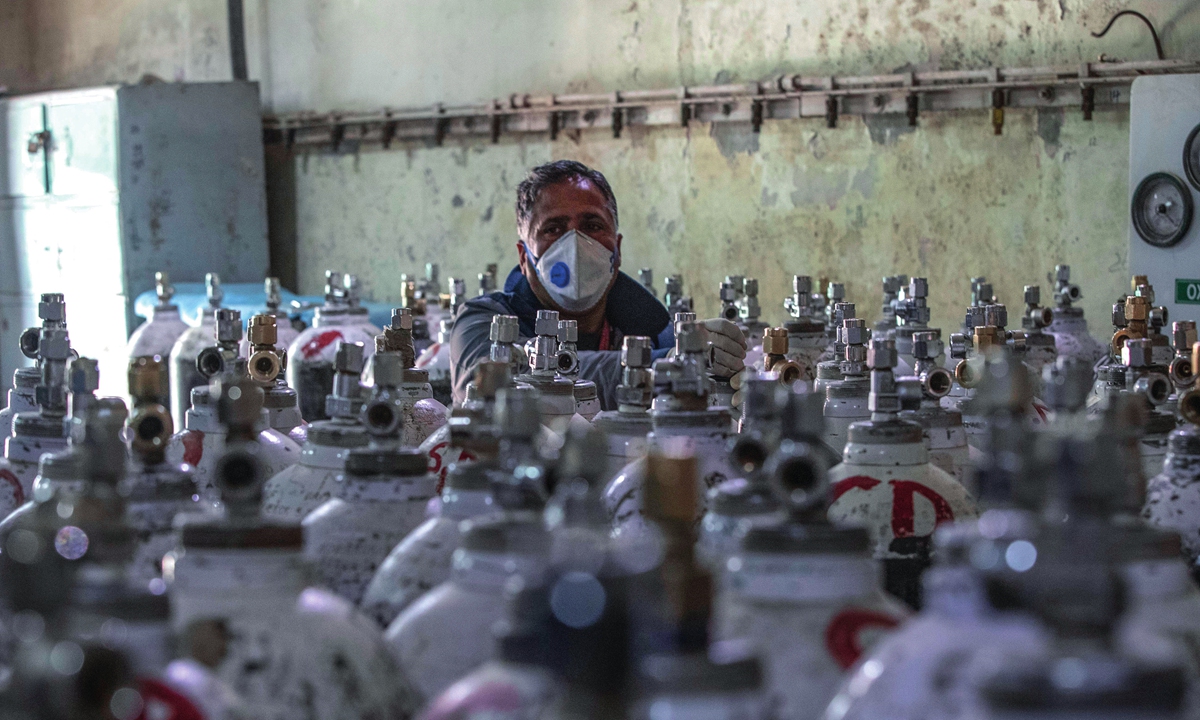Chinese manufacturers have become major suppliers of life-saving medical equipment for India to combat the devastating COVID-19. However, controversies have surfaced in the Indian media over the export price and quality from Chinese factories.
The Global Times conducted an in-depth investigation and found out a different story.
In the first part of a two-part investigative story, the Global Times breaks down the rumors of the rising prices and quality scandal, exploring how upstream material costs spike and India's wild black market are cutting into the profits of Chinese factories.
In the second part to be published tomorrow, the Global Times will explore the reasons behind the current disruption of cargo to India, and China has become the backbone of delivering crucial medical supplies in the world despite obstacles.
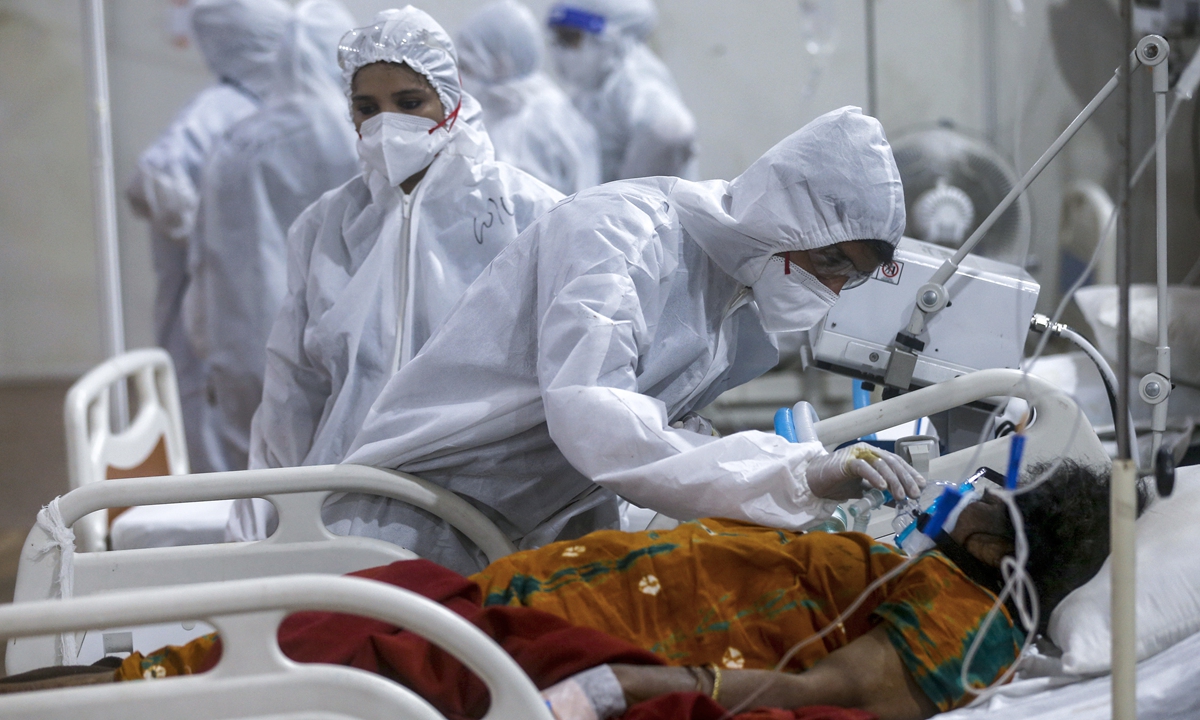
On Sunday, 3,600 oxygen concentrators arrived in New Delhi from Hangzhou, East China's Zhejiang Province, about 4,000 kilometers away. It marks the single biggest consignment of oxygen generators so far, and is among many more scheduled in the coming weeks, according to media reports.
China has become a backbone of support as India battles the devastating COVID-19. With large production capacity and tight export regulation, the Chinese government has been encouraging its companies to meet India's needs. The Global Times found many of India's medical equipment supplies, including some donations from other countries, are procured in China.
However, controversies have surfaced over the past weeks, with Indian media accusing Chinese manufacturers of indulging in price gouging and compromising export quality.
Manufacturers of different medical supplies and logistics companies interviewed by Global Times refuted the rumors of purposely raising prices and compromising quality, and they called for tighter regulations from the Indian government to regulate its wild black market and chaotic distribution of the much-needed equipment.
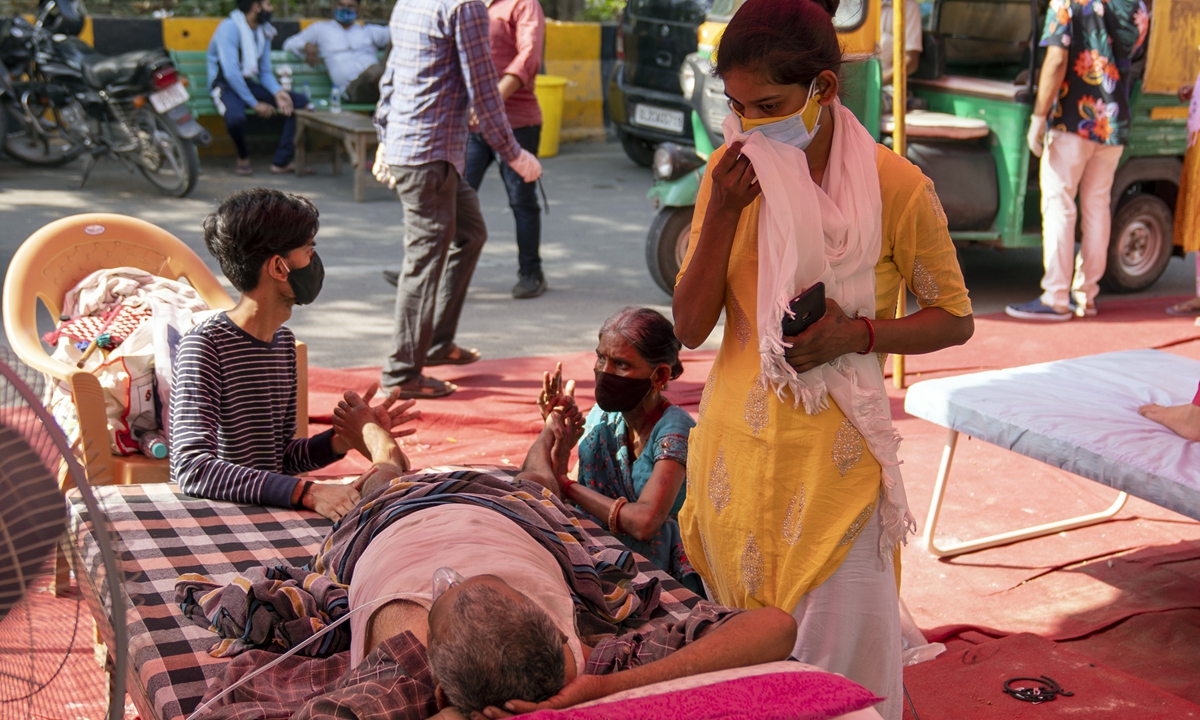
Many companies told Global Times that they have maintained or even cut the prices of medical products to India, despite the rising cost of materials, and are saddened by recent media reports in India that accused Chinese manufacturers of price gouging and quality compromises.
According to Cao Jianbiao, president of Shenzhen Huateng Biomedical Electronics, nearly half of India's hospitals source monitors from his company, but they "have not added a single penny to the price."
Another highly demanded medical equipment are oxygen generators, which some Indian media claimed that Chinese companies have been ramping up the prices on purpose.
However, the current factory price for each 5-liter oxygen generator is around 3,000 yuan ($467), a price that is about double that before April, but has halved the profit margin to only 10 percent given the drastically rising cost of raw materials globally, several companies told the Global Times.
According to Deng, a manager from Shenzhen Hongxinyuan Electronics, due to the rising demand from India, prices of materials and components needed to manufacture the oxygen generators have been raised by as much as six times.
However, companies reached by the Global Times strongly denied a recent report by Indian newspaper India Today which claims that Chinese companies including Hongxinyuan had raised prices by two to three times, and are "indulging in surging prices."
"We are not gouging prices," said Deng, who preferred not to give his full name, "We cannot help it as our costs are going up."
The prices of raw materials and goods in April recorded the fastest pace of growth in three years, rising 6.8 percent. The trend is part of a broad and powerful global rally in raw materials such as iron ore, key to making steel.
"Although the orders from India account for 80 percent of our total production, we have stopped taking orders because of rising costs and tight supplies in upstream components," said Deng.
"Some of the buyers in India hold a strong prejudice that Chinese companies are purposely raising prices, ignoring the rising costs," said a producer surnamed Yao from a medical supplies company in Chengdu, Southwest China's Sichuan Province. "They keep on bargaining, to a point where it is impossible to take the order."
Some of the key components for making oxygen generators, such as molecular sieves, are imported from Europe, which have become more expensive, Bai Yu, president of the Medical Appliances Branch of the China Medical Pharmaceutical Material Association, told the Global Times.
"The delivery cycle for these components is usually very long, as the current stock is not nearly enough to meet the explosive demand from India," Bai said.
Another manufacturer who preferred not to be named told the Global Times that exports to India are "by far the least profitable," compared to other markets in Europe and the US.
"The export price to India is often cheaper than to other countries, with wafer-thin profit margins as our Indian clients are continuously trying to bargain," the manufacturer said. "We are still providing for our Indian clients, but we had to cancel a few orders recently because the buyers are offering prices that left us with no profit at all."
Health Box, a mask manufacturing company based in East China's Anhui Province, has just shipped a batch of 20,000 masks to India, but Huang Yuhao, president of the company, told the Global Times that the export price of the masks is now close to the cost of making them.
"We have lowered the price by 30 percent on all our exports to India. In Europe, the mask is sold at around 18 yuan each, but in India the price is down to 7." Huang said, "There is next to zero profit."
Huang said that some Indian middlemen are prioritizing price over quality of the products, and are seeking extremely cheap products from factories so that they could gain a fat profit by selling them at a much higher price in India.
"Some of the Indian businesspeople came to us asking for the cheapest products, and then they flipped the price a hundred times in India," Huang said.
"It is a vicious circle," Huang noted. "There is no [Indian] government guidance on sourcing supplies, and we feel most of the medical exports have ended up in black markets in India, exploited by Indian middlemen."
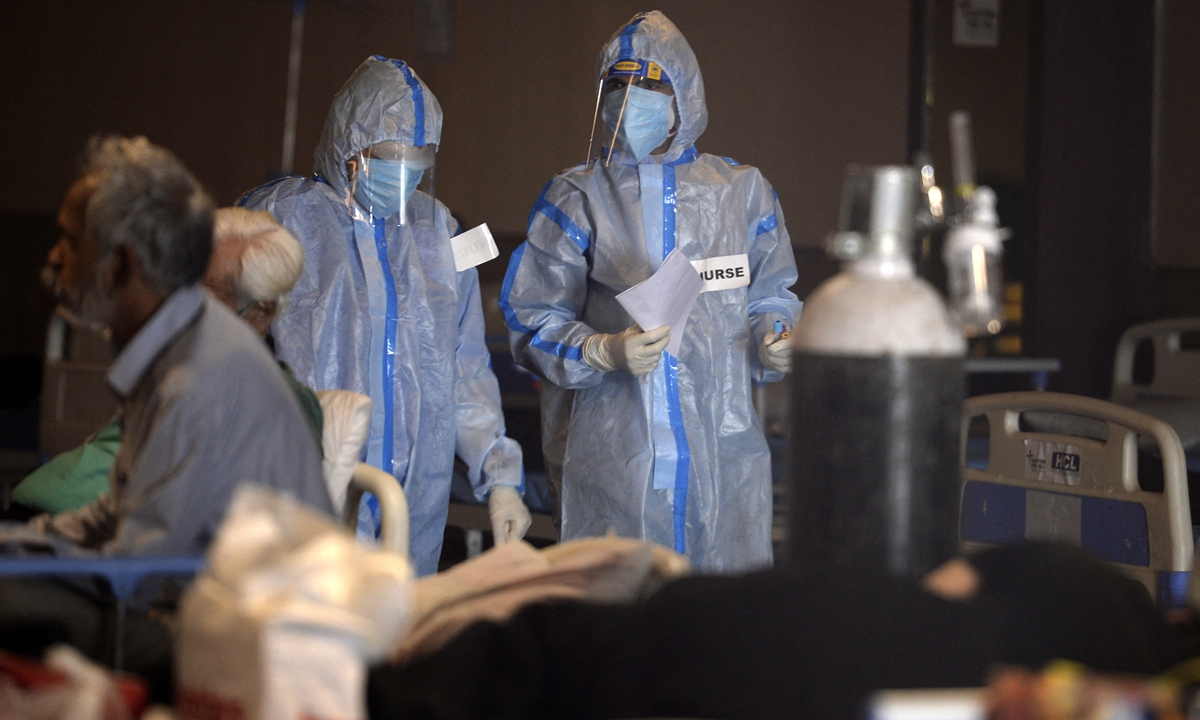
Despite the great efforts the Chinese manufacturers had made to fulfill orders, there are rising questions over the quality of the exports, accusing Chinese companies of replacing main components in medical equipment with substandard ones, according to a report by India Today.
Chinese industry insiders told the Global Times that it is hard to replace medical-grade components with non-medical ones, and it is impossible to export such poorly equipped machines to other countries and regions.
An oxygen-making machine does not involve cutting-edge technology, said Bai, and the quality of Chinese oxygen generators has been proven by Europe and the US, and it is not up to them - some Indian media - to decide whether it meets the standards or not, he remarked.
Currently, China is the largest oxygen machine exporter, and foreign companies, including those from the US, have their factories built in China, which demonstrated quality control is not a problem for the products Chinese companies manufactured.
"China's manufacturing technologies in medical supplies are very mature. If the quality is below standards, they cannot be exported because of tight export regulations," Bai said.
In March 2020, the Chinese customs authority - the General Administration of Customs (GAC) - came up with a strict set of regulations regarding exporting medical supplies to other countries, requiring all medical equipment to attain the certificate from the importing country.
Under the requirements, companies doing businesses with their Indian partners will have to be certified by the Central Drug Standards Control Organization under the Indian Ministry of Health and Family Welfare, and present the certificates to China's GAC before exporting.
"The Chinese authority is very cautious about exporting medical supplies, especially now that the volume has drastically increased," said Bai.
In April, China supplied more than 5,000 ventilators, 21,569 oxygen generators, over 21.48 million masks and around 3,800 tons of medicines to India, according to statistics from GAC in China.
A batch of 1,500 oxygen generators had been delivered to West Bengal state, and are well received by locals fighting the pandemic, according to Zha Liyou, consul general of the Chinese Consulate in Kolkata in West Bengal. Since Chinese supplies are welcomed, what is the real source of substandard medical supplies?
"I was told that numerous Indian importers are buying concentrators including components from anyone without due verification and without effective coordination," Zha said, "Better check who bought from whom."
Experts also urged some Indian buyers to get a clearer understanding of the product categories, so they will not mistakenly pick the oxygen machine below their expectations.
Oxygen generators have different oxygen outputs. General medical oxygen concentrates generate 3-10 liters of oxygen per minute, and household ones generate three liters or lower.
"So if you choose a low flow - the household one - its oxygen output is not enough," Bai said, urging Indian buyers to be clearer about what they need and understand the standards in the product selection.
Bai said that there were cases when some importers in India did not consider this. But now many have begun to focus on importing high-flow oxygen concentrators, because only high-flow oxygen machines are for professional medical use.
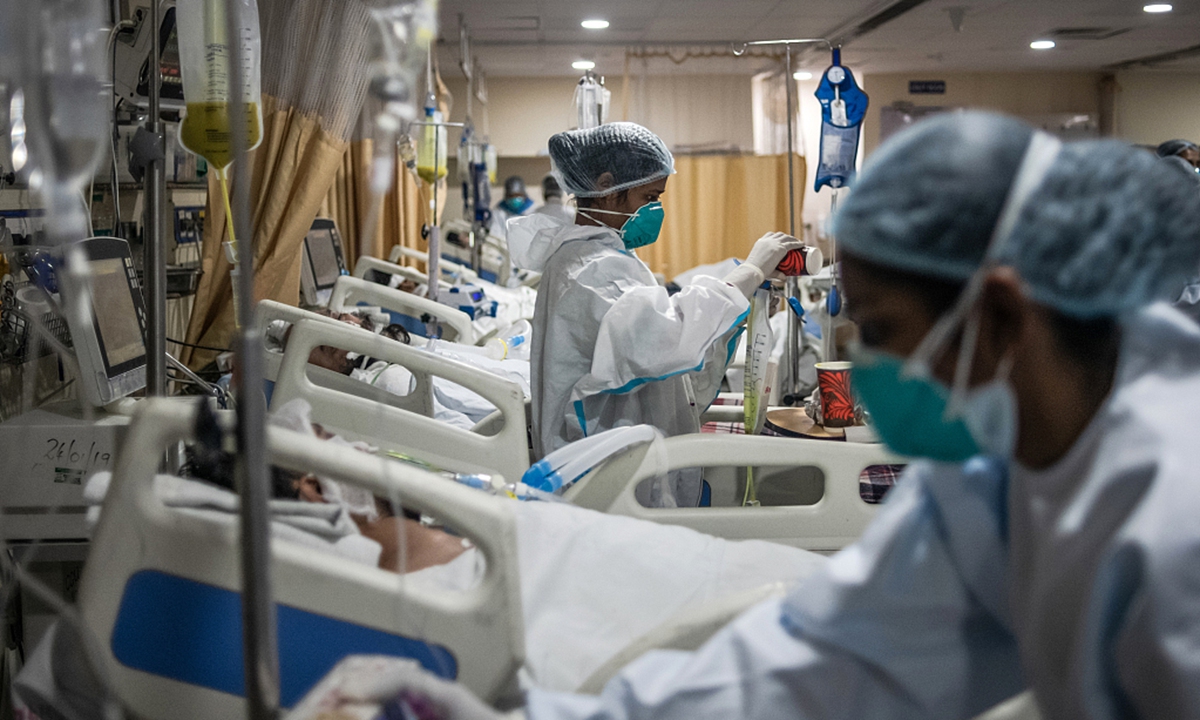
The ravaging epidemic has become a scenario of life and death in India, but the chaotic procurement and distribution of medical supplies, caused by a lack of government supervision, is creating a booming wild black market in India and preventing the supplies from reaching those in real need.
According to the latest data released by the Indian Ministry of Health on Wednesday, the country reported 127,000 more cases in the past 24 hours, bringing total to 3.22 million. Death toll reached 283,248, with 4,529 new deaths reported on Wednesday.
The surge in cases has put an unprecedented strain on India's health system, leaving facilities across the country desperately short of oxygen concentrators much needed by COVID-19 patients.
According to Indian media reports, the Delhi Police announced earlier this month that a company named Matrix Cellular Services is suspected of selling oxygen concentrators in the black market at "exorbitant rates." The company reportedly procured more than 7,000 oxygen concentrators before selling them to COVID-19 patients for a huge profit, according to the Indian Express.
The price of oxygen concentrators starts at 40,000 rupees ($544) and goes up to 90,000 rupees, open data in India showed. But according to the newspaper, citing an investigating officer, most of the devices were imported from China and sold for a profit of 40,000-42,000 rupees.
"This is definitely against our good intention of helping India. We are making and selling the machines at extra-thin profits on our end out of sympathy," said the owner of a large oxygen concentrator supplier based in Shenzhen, South China's Guangdong Province, which exported tens of thousands of oxygen concentrators to India in recent months.
"We understand that there are going to be price hikes, but there should be some limit on this," said the above-quoted owner who preferred not to be named.
According to an industry insider who requested anonymity, some Chinese middlemen from across the country can also elevate the price by more than 40 percent after they receive the equipment from the factories.
"Many of those middlemen are from East China's Zhejiang Province, others from Shanghai, Tianjian and Ningbo," the insider said. "They can get the machines for prices as low as 3,000 yuan each, and then export them for more than 4,000 yuan."
Common people in India are unlikely to buy an oxygen generator, because of the expense, and the other is that as the purchase time goes by, it is too late, a Chinese surnamed Zhang living in New Delhi told the Global Times on Wednesday. She said that oxygen concentrators without a brand on the Indian market can be sold for 6,700 yuan, which only the rich can afford.
"My husband is a doctor at a local hospital. Since the beginning of the epidemic, the [Indian] government has not issued anything. He was not even issued goggles, just masks. The government has no other substantive actions other than lockdowns," Zhang said.
The soaring prices on some anti-epidemic items reflect the fact that the Indian government is relaxing its attention on domestic commodities, Qian Feng, director of the research department at the National Strategy Institute at Tsinghua University, told the Global Times on Wednesday.
India is a mercantilist society. There is a large demand for goods and materials, and a huge demand for imports. But the high price is the result of complicated factors, Qian said, urging India's central and local governments to strengthen joint market supervision and regulation over the much-needed products that save Indian lives.
